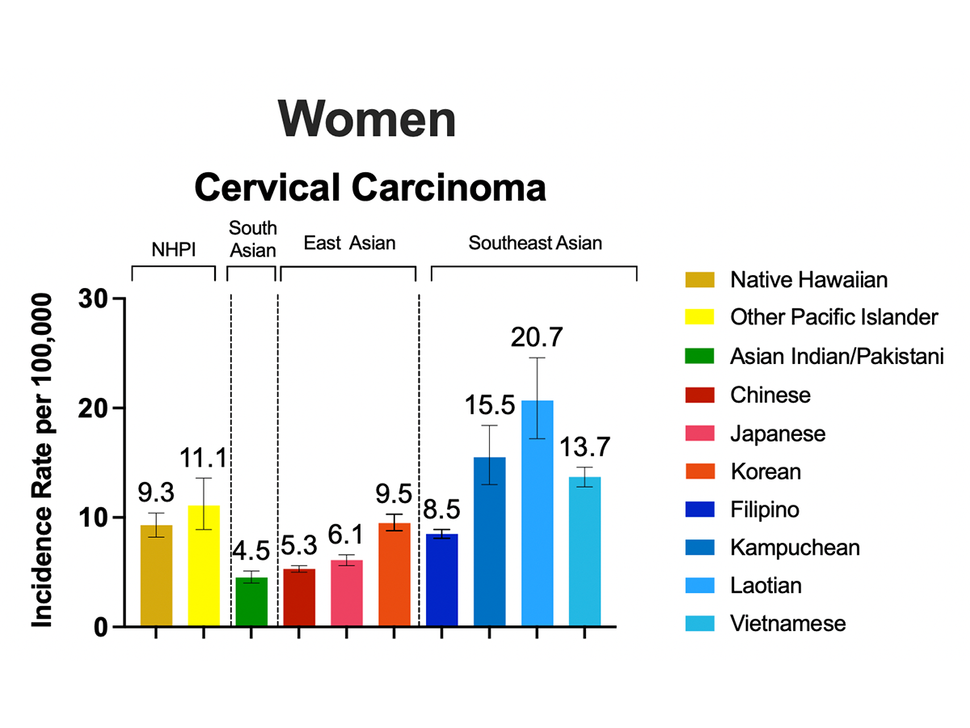Disaggregating Data on Asian American and Native Hawaiian and Pacific Islander Populations by Ethnicity Reveals Disparities in HPV-Associated Cancers
, by Elise Tookmanian, Ph.D.
Asian American (AA) and Native Hawaiian and other Pacific Islander (NHPI) populations are often treated as one group, which can mask differences between race (AA vs. NHPI) and individual ethnic groups (e.g., Asian Indian, Chinese, Vietnamese, etc.) and result in misleading conclusions. A study revealed disparities in incidence rates of human papillomavirus (HPV)-associated cancers in AA and NHPI populations when disaggregated by race and ethnicity. This study was published in the Journal of the National Cancer Institute: Cancer Spectrum on March 1, 2023.
AA and NHPI populations have lower cancer screening rates and HPV vaccination compared to other racial/ethnic groups, which may impact the incidence of HPV-associated outcomes. Additionally, many previous HPV-related studies that include AA and NHPI populations continue to inappropriately treat both races as a single group. In order to investigate the incidence of HPV-associated cancers, such as cervical and oropharyngeal cancer, by AA and NHPI ethnic groups, Jaimie Z. Shing, Ph.D., M.P.H., postdoctoral fellow in the Infections and Immunoepidemiology Branch, and Jacqueline B. Vo, Ph.D., R.N., M.P.H., assistant clinical investigator in the Radiation Epidemiology Branch, led an analysis using the Surveillance, Epidemiology, and End Results “Detailed Asian/Pacific Islander database (1990-2014).” The research team included 2022 summer intern, Jereme Corbin. This database is the only large-scale resource in the United States with reliable information on the total number of individuals in each ethnic group, which is necessary to calculate disaggregated incidence rates.
This analysis revealed wide variations between AA and NHPI populations and by ethnicity. The authors showed how the combined incidence rate of AA and NHPI populations together is misleading because it reflects the incidence rate of the AA population, since the population size is so much larger than the NHPI population. When looking by ethnicity, the most notable differences in incidence rates (per 100,000 people) were for cervical cancer among women (ranging from 4.5 for Asian Indian and Pakistani women to 20.7 for Laotian women) and for oropharyngeal cancer among men (ranging from 1.1 for Chinese men to 5.1 for Native Hawaiian men).
These disparities require further investigation, but they could be related to differences in immigration patterns, risk factors for HPV exposure, or health-seeking behaviors. These findings underscore the importance of, at a minimum, treating AA and NHPI people as distinct populations and capturing more granular ethnic groups in health data.
Reference
Shing JZ et al. Human papillomavirus–associated cancer incidence by disaggregated Asian American, Native Hawaiian, and other Pacific Islander ethnicity. JNCI Cancer Spectr. 2023.
